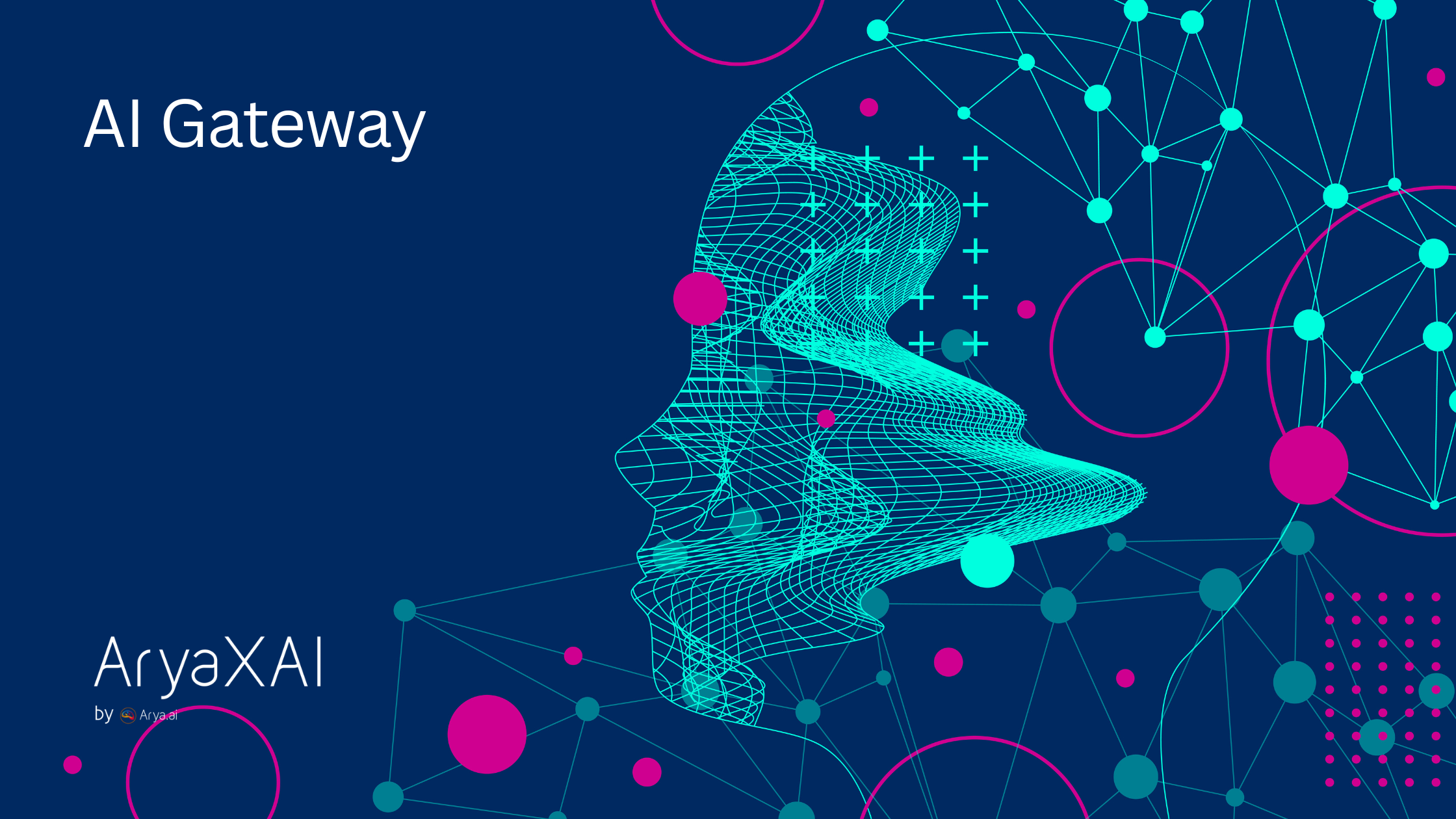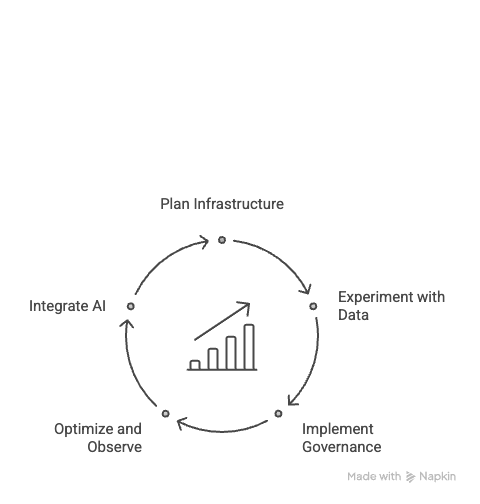Building the Future: Is Your Organization Ready for an AI Gateway?
November 13, 2025

As organizations accelerate their AI adoption-especially with more agentic and workflow-oriented systems-the complexity of managing such capabilities grows just as rapidly. Multiple models, varied data sources, compliance demands, and evolving business use cases make AI environments harder to control and scale.
This is where the AI Gateway comes into play. It is a central layer that governs access, enforces policies, manages routing, and provides visibility across your AI ecosystem. But how do you know if you need one? And at what point should you introduce it?
This blog breaks it down in simple terms to help you gauge your AI maturity, understand the role of an AI gateway, and arrive at the right foundation required for implementation.
Understanding AI Maturity: Where Does Your Organization Stand?
Before deciding if an AI gateway is necessary, it’s important to understand where your organization sits on the AI maturity curve. This curve helps you evaluate how advanced your AI adoption is—not just in terms of experimentation, but also governance, operational readiness, and enterprise-wide scale.
- Infrastructure Readiness
At this stage, the basic compute and environment setup exists. Teams are still exploring AI possibilities, and work is mostly experimental. - Initial Experimentation
A few use cases may have reached production, but adoption is limited. Teams are learning, testing, and figuring out what works. - Governance in Place
Security processes, compliance checks, and performance monitoring structures are now implemented for production AI workloads. - Optimization & Observability
AI adoption has scaled across multiple use cases. The organization now tracks cost, performance, reliability, and other metrics, and actively optimizes workflows. - Full Business Integration
AI becomes embedded across core business operations. AI agents and systems are part of everyday decision-making and execution. - Most enterprises today sit between Stages 2 and 3—they are experimenting and moving into production but still lack a unified AI control layer. Recognizing your current maturity level is key to determining whether it’s time to build or adopt an AI gateway.
When Is the Right Time to Introduce an AI Gateway?
Timing is key in implementing an AI gateway. If introduced too late, organizations struggle with rising complexity and reduced control. As AI initiatives scale outwards across teams, unmanaged usage may easily cause cost sprawl, especially when numerous groups consume models and services with no uniform tracking or optimization, leading to unpredictable expenses and redundant systems.
Delaying a gateway also creates governance gaps. Different teams may follow different standards regarding data handling, model access, and compliance that increase organizational risk. Without a centralized layer that can enforce consistent policy and practice, it becomes challenging to ensure safety, auditability, and accountability across AI workloads.
Over time, teams may develop isolated, customized architectures for routing, approvals, and monitoring. This leads to systems that become fragile and hard to scale. Retrofitting a gateway becomes a lot more difficult and expensive.
The ideal time to introduce a gateway is when your AI adoption has moved beyond prototypes, and a few use cases are in production. In other words, you have enough practical insight to define requirements but your architecture is still flexible enough to integrate a unified control layer without major rework. As you further advance into more structured governance and broader use-case expansion, the need for a gateway becomes even more urgent.
Below is a stage-by-stage breakdown to help determine readiness:
- Stage 1: Infrastructure Ready
Organizations here should start planning for future needs. Even if implementation is premature, identifying early control points, policies, and abstractions helps prevent technical debt later. - Stage 2: Initial Experimentation
This is an ideal time to define gateway requirements. You have real production data, real workflows, and early insights—helping you create a gateway that fits your needs without reworking mature systems later. - Stage 3: Governance in Place
At this stage, a gateway becomes almost necessary. Without it, you risk inconsistencies across teams and repeated manual efforts to enforce standards. - Stage 4: Optimization & Observability
You can still introduce a gateway, but integration becomes more complex. Multiple workflows, policies, and tools need alignment, increasing the overall effort. - Stage 5: Fully Integrated AI
Retrofitting a gateway here can be costly and disruptive. With deeply embedded AI systems, unraveling and centralizing control points becomes challenging.
In summary, the best time to implement an AI gateway is during Stage 2 or early Stage 3, when your organization has enough production experience to define needs—but is not yet constrained by sprawling architectures.

What Should Be in Place Before Building an AI Gateway?
Before investing in an AI gateway, it’s important to ensure that you have the right foundations in place so the gateway can deliver real value. Of course, one of the most important elements involves active AI use cases running in production. These are not just prototypes or experiments, but real workloads that show what type of traffic will be coming in, what inputs, and what kind of model interactions the gateway will have to deal with and manage.
You should also have the core AI components operating in your ecosystem. That includes LLMs, data pipelines, vector databases, and key APIs. A gateway needs these components in place to act as a central layer-standardizing access, routing, and enforcement across them.
Another key prerequisite is that the AI workflows are defined. At least one end-to-end flow, such as "input → retrieval → model → output", should already be established. Gateways work best when there are real, repeatable processes to orchestrate, monitor, and secure.
Strong compliance requirements should be placed as well. If your organization operates under data protection, privacy, or regulatory obligations, a gateway becomes even more valuable since it makes sure those rules are applied consistently every time an AI model is used.
Finally, a clear governance structure is paramount. When the roles, responsibilities, and approval processes are already defined, the gateway can enforce access rules, track usage, and maintain accountability across teams more effectively.
Put together, these elements provide the foundation required for an AI gateway to work seamlessly and deliver long-term operational benefits.
Benefits of Implementing an AI Gateway
- Unified Governance
A gateway centralizes all policy enforcement, ensuring every team follows the same rules for data access, model usage, and compliance. This reduces fragmentation and keeps AI operations aligned with enterprise standards. - Cost Efficiency
By managing routing, applying quotas, and enabling caching, a gateway helps prevent uncontrolled spending. It ensures resources are used efficiently and avoids duplication across teams. - Improved Visibility
Gateways provide detailed logs, monitoring dashboards, and usage analytics. This transparency helps teams understand performance, diagnose issues, and maintain accountability for every request made to AI systems. - Enhanced Security and Compliance
With a single enforcement layer, sensitive data is protected more consistently. Access control, audit trails, and compliance checks become easier to manage and verify across all AI workflows. - Future-Ready Scaling
As your AI landscape grows, a gateway allows you to add new models, workflows, or teams without major architectural changes. It creates a flexible foundation for expansion and multi-model orchestration.
Challenges to Be Aware Of
- Introducing Too Early
Implementing a gateway before you have meaningful workloads can add unnecessary complexity. Without real traffic or workflows, the gateway may become overhead instead of value. - Weak Governance Planning
A gateway is only effective when supported by clear policies, roles, and approval structures. Without proper governance, the gateway might enforce nothing substantial. - Late Implementation
Adding a gateway during advanced AI maturity stages can lead to major rework. Integrating it into existing, scattered architectures may introduce technical debt and operational friction. - Vendor Lock-In Risks
Some vendor-specific gateways limit flexibility by tying you to their ecosystem. This can restrict model choice, increase switching costs, and reduce long-term adaptability.
Conclusion
An AI gateway is becoming the critical pillar in organizations as a means of scaling AI safely, efficiently, and sustainably. It provides the much-needed governance, visibility, and control in managing exponentially complex AI-powered operations.
It all comes down to timing. Those organizations that have early production use cases, with increasing needs for governance, are the best positioned to bring in a gateway. Whether you build or adopt, having the right foundation of use cases, workflows, policies, and governance structure in place will set your gateway up for long-term value.
SHARE THIS
Discover More Articles
Explore a curated collection of in-depth articles covering the latest advancements, insights, and trends in AI, MLOps, governance, and more. Stay informed with expert analyses, thought leadership, and actionable knowledge to drive innovation in your field.

Is Explainability critical for your AI solutions?
Schedule a demo with our team to understand how AryaXAI can make your mission-critical 'AI' acceptable and aligned with all your stakeholders.



.png)



















